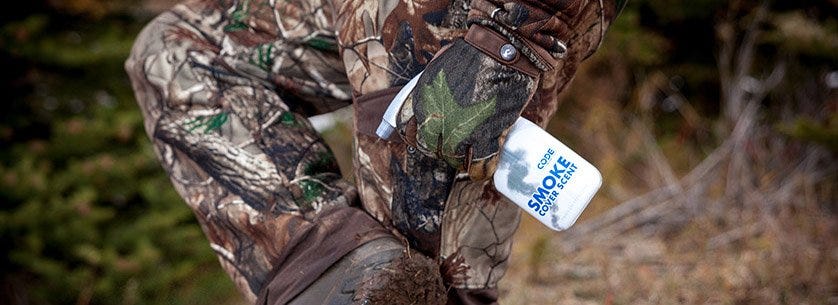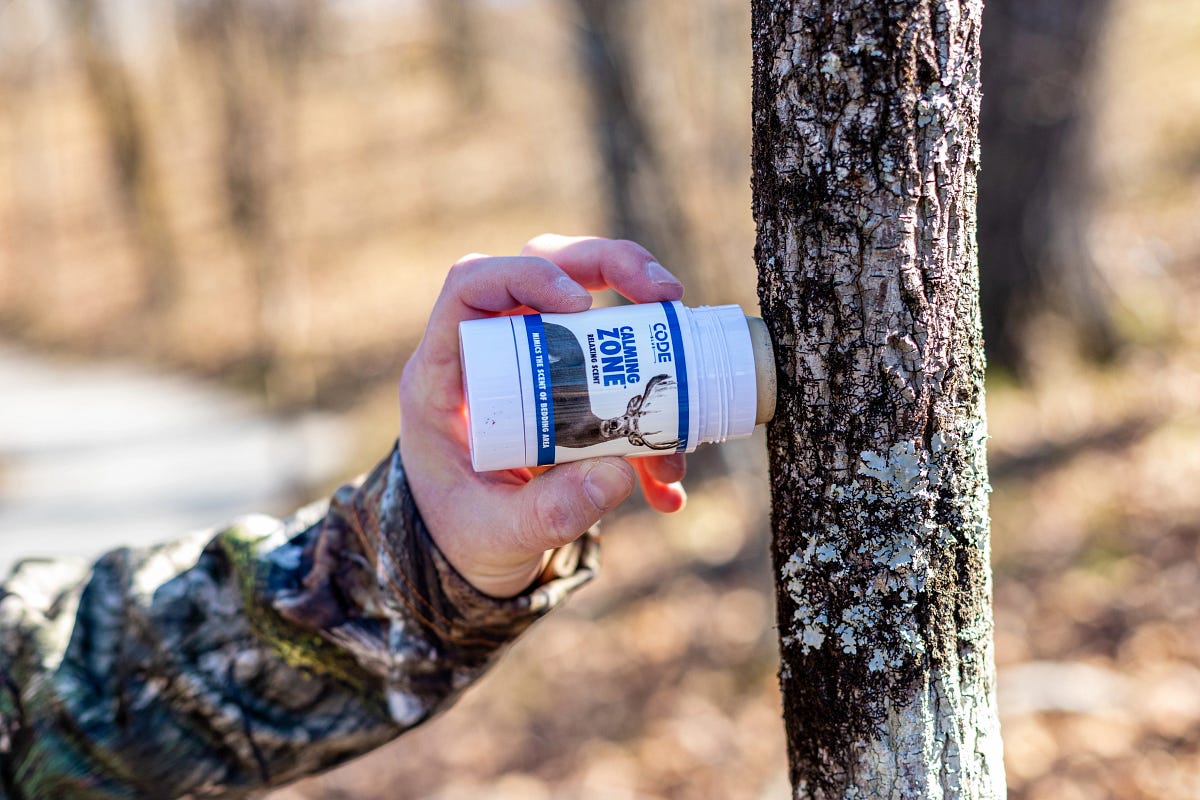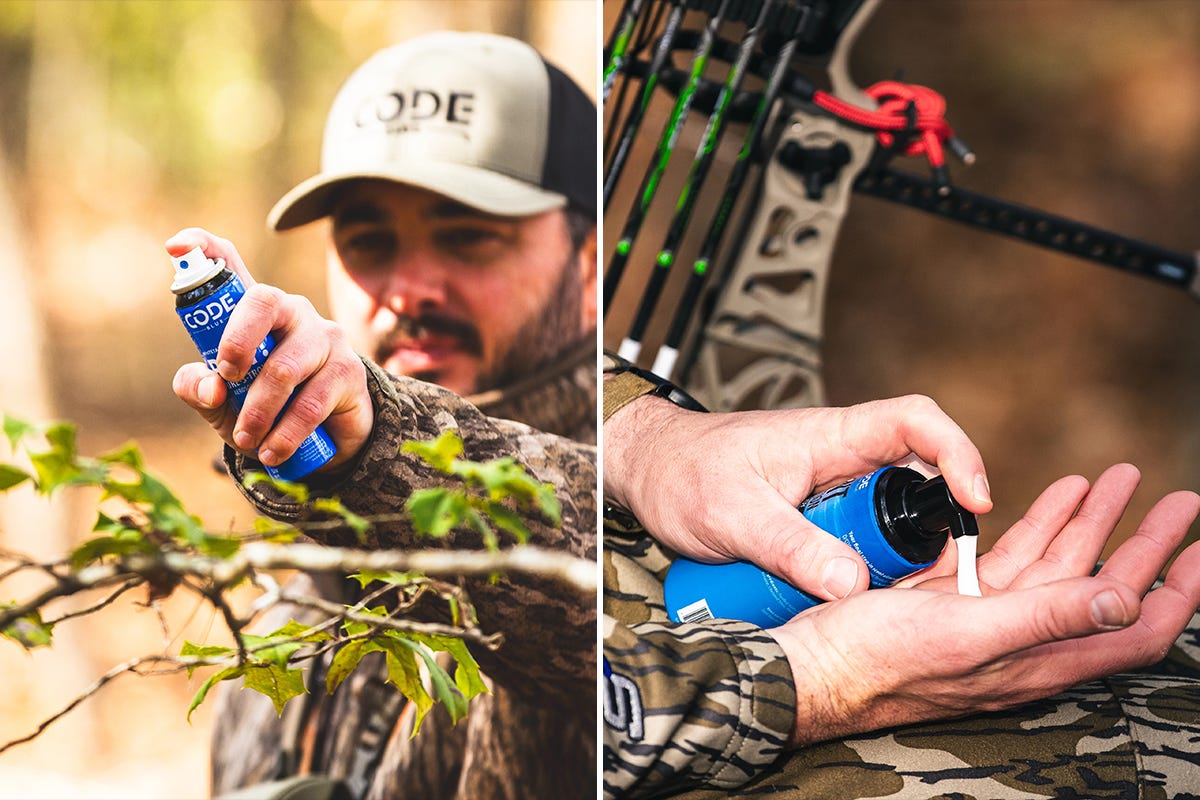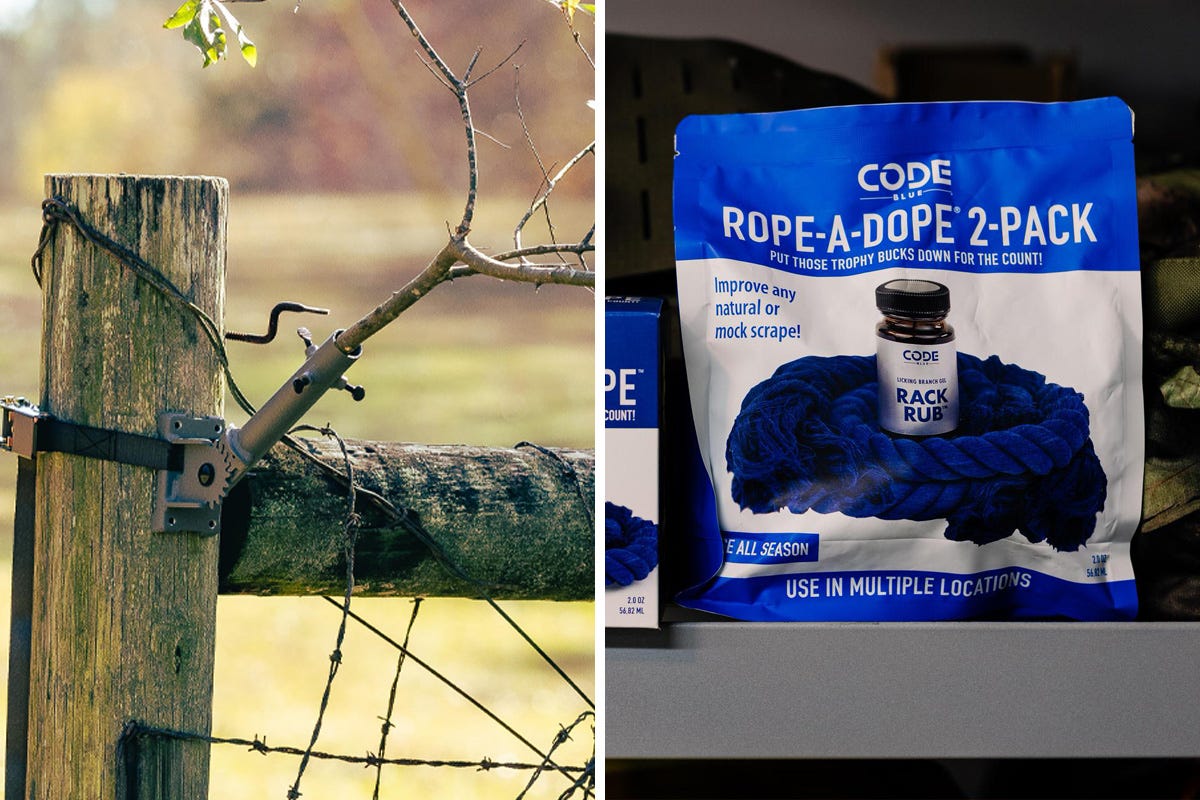- Dec 10, 2018
Tips for Pairing Scent Control with Cover Scent
 Pairing scent control and cover scents may seem contradictory and counterintuitive, but it can be a very effective strategy to employ at any time during the season. Here’s a four-step plan for doing it right.
Pairing scent control and cover scents may seem contradictory and counterintuitive, but it can be a very effective strategy to employ at any time during the season. Here’s a four-step plan for doing it right.
1. Start Clean |
The key to any cover scent use is to understand that it's not intended to literally mask or overcome every trace of human scent. That’s just not possible. Deer can smell hundreds of different odors at a time. It is not at all difficult for them to simultaneously get a nose full of cover scent and a nose full of human odor.
Start by following a solid scent-control regimen first. That includes using D-Code products in the shower, in the laundry, and spraying or wiping down when afield. The goal here is to eliminate or reduce as much human odor as possible. This will give your cover scent a fighting chance.
2. Add the Insurance |
So, if you start out scent-free, why do you need a cover scent? Because we create more scent all the time, and our clothing picks up scent on a regular basis. You simply can't control every odor that you or your gear comes into contact with and you can't stop your body from generating some level of odor that deer can detect.
A good cover scent is like an insurance policy. It's not designed to prevent the unpreventable; it's there to take care of things when they happen.
3. Play the Wind |
I like to use cover scents in the same manner I'll use urine-based scents. Just as I don't hang an estrous-soaked drag right by my stand, I don't utilize cover scent at my stand location. Instead, I'll place it 10 to 15 yards downwind from my stand site. By placing the cover scent away from my location, I believe the amount of scent is stronger when deer are approaching.
4. Match the Hatch |
Utilizing a cover scent that is completely foreign to an area is a common mistake, and one I've made myself. Remember, we're trying to hide and blend in. Being as scent-free as possible is the start. Employing a cover scent for added insurance is the next step. But if your cover scent is an odor not found in that area, the jig might well be up before you even get started.
About the Author: Tony Hansen manages for and hunts mature whitetails in his home state of Michigan, where sweating the details is the only way to succeed. When not hunting his own properties, he can be found pursuing deer on public land throughout the whitetail’s range. Tony’s writings have appeared in Outdoor Life, Traditional Bowhunter, North American Whitetail, and Bowhunter.



